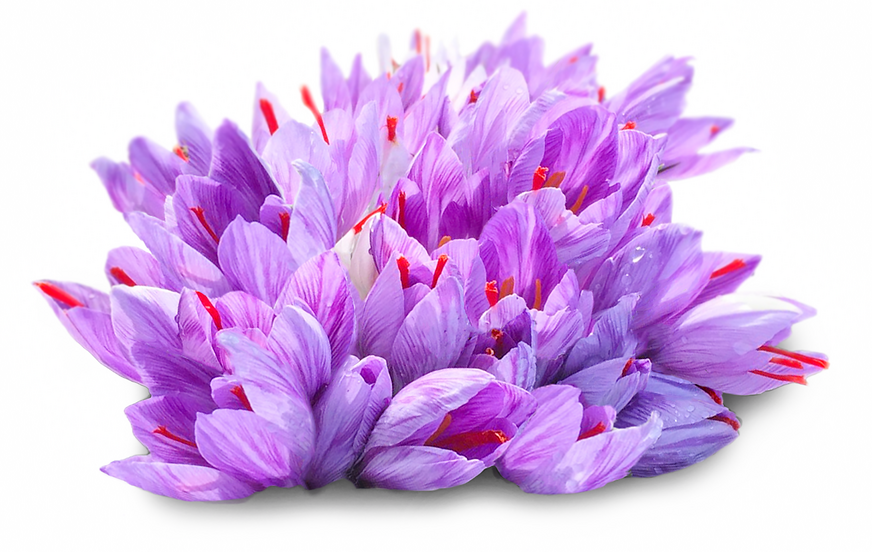


Saffron Flowers
Estimated Inventory, bulb : 0
Description/Taste
Saffron flowers grow from an underground corm, or bulb and have thin, blade-like green foliage, or leaves which can grow to sixty centimeters in length. The foliage is not self-supporting and may fold over forming a weeping habit as it matures. The flowers range in color from light lavender to a deep royal purple, and some crocus bulbs will occasionally produce a pure white flower which is representative of its original wild form. Each flower typically has five petals with three red stigmas, and on a rare occasion, a flower may produce five stigmas. Saffron flowers have a sweet, honey-like fragrance and the stigmas have a musky, hay-like, floral scent with an earthy taste.
Seasons/Availability
Saffron flowers are available fall through winter.
Current Facts
Saffron flowers, botanically classified as Crocus sativus, are the flowers of a perennial plant belonging to the Iridaceae family. Saffron flowers are produced over a forty-day period in autumn and are most famous for their long stigmas. When picked, the crimson stigmas produce the spice saffron, one of the most expensive spices in the world. It is important to note that only the stigmas, the female portion of the flower, are harvested for commercial saffron. The stamens, the male part of the flower, are regarded by experts to have no culinary value and are generally smaller than the stigmas, bearing a pale-yellow hue. Between 150,000 and 200,000 flowers are needed to produce one kilo of the spice, with each flower being harvested and stripped by hand and carefully dehydrated, contributing to the costly price. Also known as Red Gold, saffron spice is most commonly used to color and give a subtle earthy flavoring to food. It can also be used as a clothing dye.
Nutritional Value
Saffron spice contains some manganese and B vitamins. It also contains crocin, which is a carotenoid pigment that gives food and dyes its golden hue.
Applications
Saffron stigmas can be incorporated fresh or dried and are used in dishes from all over the world. Saffron rice, paella, curries, and Italian risottos are all popular dishes that call for saffron to add a distinct flavor. It is also used in Moroccan saffron chicken, lamb adobo, bouillabaisse or fish soup, and bornai-e bademjan, which is an eggplant and yogurt dip. Saffron can also be used in desserts such as baked goods, brittles, puddings, and ice cream. Saffron pairs well with seafood, eggs, meats such as lamb and poultry, aromatics such as garlic, ginger, fennel, and onions, spices such as cardamom, turmeric, and cinnamon, fruits such as orange, lemon, and apples, vegetables such as spinach and asparagus, honey, white wine, and rose water. Dried saffron will keep up to two years when stored in a sealed, air-tight container in a cool, dry, and dark place.
Ethnic/Cultural Info
Saffron is one of the most well-documented spices and has been used in Egyptian, Persian, Roman, Chinese, and Indian cultures. It was used in hangover, measles, and jaundice remedies, and remedies to even cure melancholy. In China, Saffron is also used in perfumes, fabric dyes, and is offered as a gift to Buddha. Saffron is still viewed as a tool to stimulate life flow in traditional Chinese medicine and is used today to improve circulation and viscosity of blood.
Geography/History
The origin of wild Saffron flowers is largely unknown, but they are believed to have originated near Greece or Persia. The domesticated Saffron flower was created from the wild variety during the Bronze Age and was then spread to Asia and Europe. Today Saffron flowers can be found across the world on online seed catalogs, and the saffron spice can be found in spice shops and markets in Asia, Europe, North America, Africa, and southern parts of Australia.




